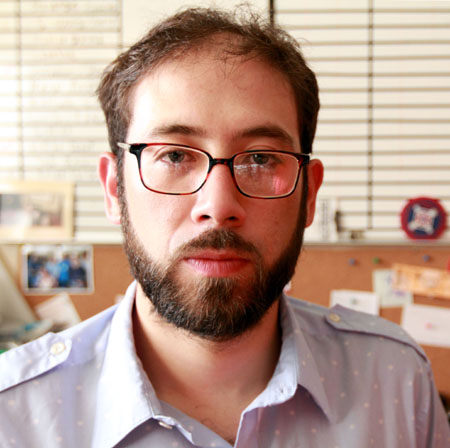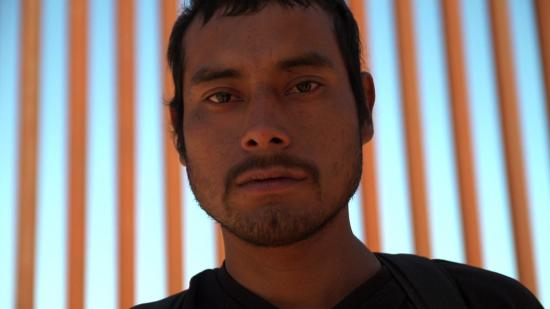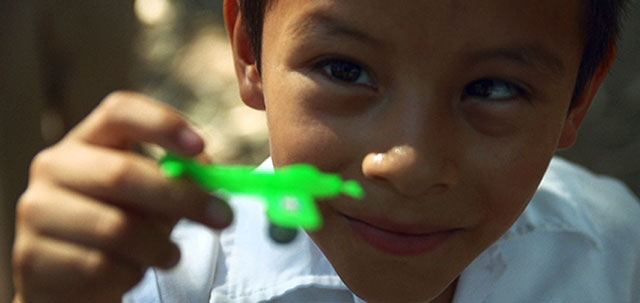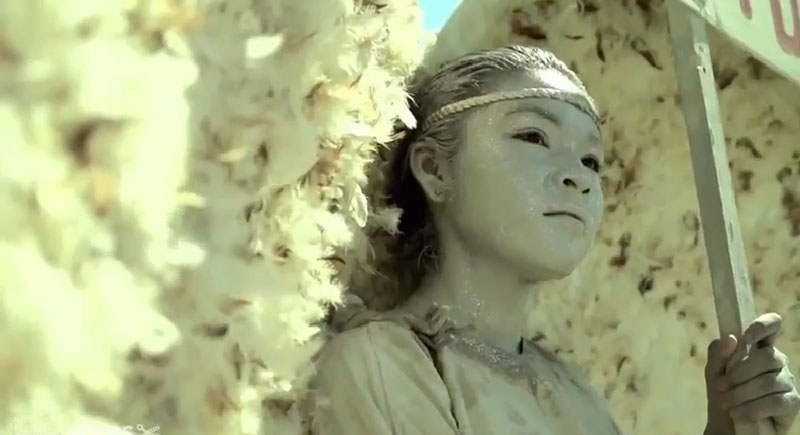Here’s what you see when you see Rodrigo Reyes’ Purgatorio, his documentary about lives that connect and criss-cross the U.S-Mexican border:
- A Guatemalan on the Mexican side who says he’s determined to climb the border’s physical barrier and find work in the United States so he can send money to his family.
- A Mexican boy playing with a simple toy airplane, as if he’s found the greatest gift ever.
- The wall itself — shown from above as it punctures landscape that is among the most beautiful in the world.
- An American extremist who patrols the border, wants to curtail undocumented immigrants, and says hunting people is like hunting animals: “Some people hunt game. If you hunt an individual, that’s an even greater thrill.”
- A U.S. mortician who tries to find dignity in the skulls and bones he collects on the border’s American side.
Death and dignity. These are two recurring themes in Purgatorio, which is screening three times in the Bay Area — Sunday, Oct. 26 at the Roxie, Tuesday, Oct. 28 at the New Parkway in Oakland, and Wednesday, Oct. 29 at Second Act in San Francisco. The director will speak at all three screenings. Reyes — who was born in Mexico, moved to the United States at age 6, moved back and forth between Mexico and California, and now lives in Merced — brings an ideal perspective to his film: That of a curious dual citizen who gives people a chance to articulate their views about immigration and the rewards and dangers of crossing closed borders. Reyes puts his own views into Purgatorio, questioning the need for man-made dividing lines, and admitting that, “I feel angry and lost.”

Purgatorio is equal parts essay, art film and documentary. Its poetic scenes, haunting and stirring music, and the extended time it gives its subjects elevate the U.S-Mexican border into a complex ecosystem of beauty and hell. Reyes looked to Dante Alighieri’s 14th-century masterpiece for a title that would capture that complexity. He looked to his own life for the motivation to make the film.
“It wasn’t until I came to the U.S. that my Mexican identity became an issue that gets dealt with every day, for better and for worse,” Reyes tells me in a phone interview from Merced. “I didn’t realize that some people thought being Mexican was really negative. Part of that identity struggle, part of that identity politics, is what led me to want to discover the border. Because when you’re an immigrant, especially in the U.S., where we’re constantly debating race and ethnicity, and we can’t seem to figure out how to get along in a stable way, you always feel a border behind you.”
The humungous barrier we see in the film, that Reyes experienced up close, becomes a symbol of American political and physical power. The barrier, though, exaggerates the issue of Mexican border-crossings, Reyes says: “Whether you’re on the left or the right, you have this image of a wall, and people crossing the wall and invading like barbarians. It overwhelms political discussion. Most of the undocumented immigrants to the U.S. are coming with visas. They’re here legally for a while. But it’s not as exciting to say, ‘People are coming on a 747, and watched movies all the way over here.’ It doesn’t get people riled up.”

Last year, based on the release of Purgatorio, Filmmaker magazine named Reyes one of its “25 New Faces of Independent Film.” Reyes, who is 31, works as a Spanish-language interpreter at Merced Superior Court. In Purgatorio, he gets people like the Guatemalan immigrant to talk deeply about their lives even as they’re on the verge of stressful, life-changing situations. “I have a job that isn’t in filmmaking, but it gives me an opportunity to engage with people who are in really extreme situations. So I wasn’t intimidated (by the subjects in Purgatorio). I was able to look at the human behind whatever was going on. Because that’s what I do at work, to treat everyone equally. And I found that people on the border were very open to the idea of someone just asking them about life, instead of asking them to do something. Migrants are being told what to do all the time. The Mexican government tells them what to do. The U.S. government tells them what to do. And even people who help them tell them. And we come along and say, ‘We just want you to share your experience, and just tell us what you’re going through right now.’ And nobody had really asked them that.”

So, while Reyes shot the footage for Purgatorio in just four weeks, he managed to get intimate interviews with people who are often left out of the debate about the U.S-Mexican border. In the United States, politicians often get the most air time about immigration. Typical: The Ebola crisis prompted Scott Brown, the New Hampshire Republican Senate candidate, to warn that terrorists infected with the disease could easily enter the United States across the Mexican border. “We have a border that’s so porous that anyone can walk across it,” Brown said recently, “. . . we do nothing to secure our border. It’s dangerous.”


